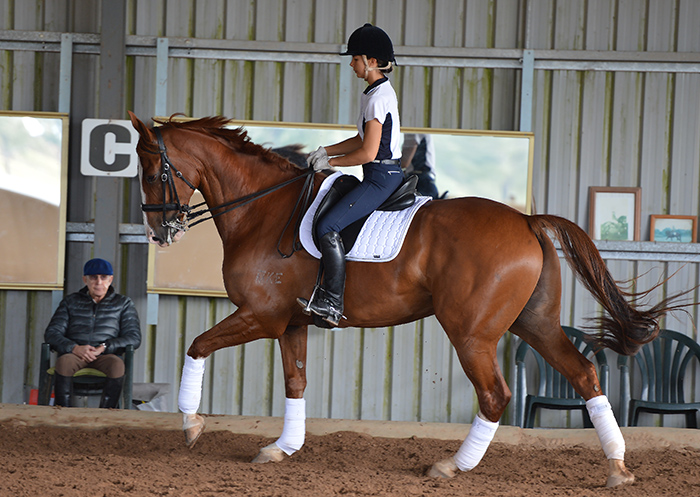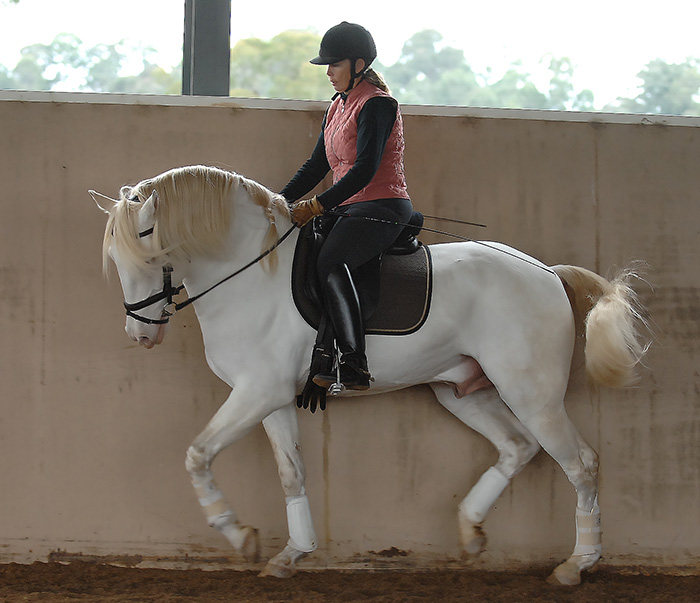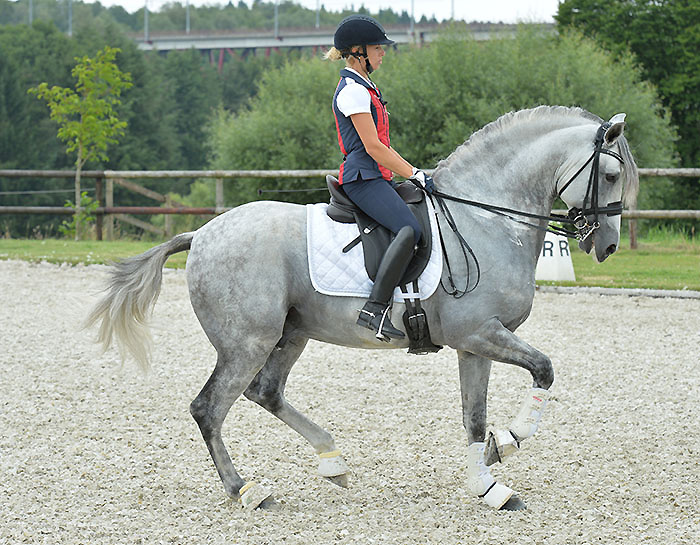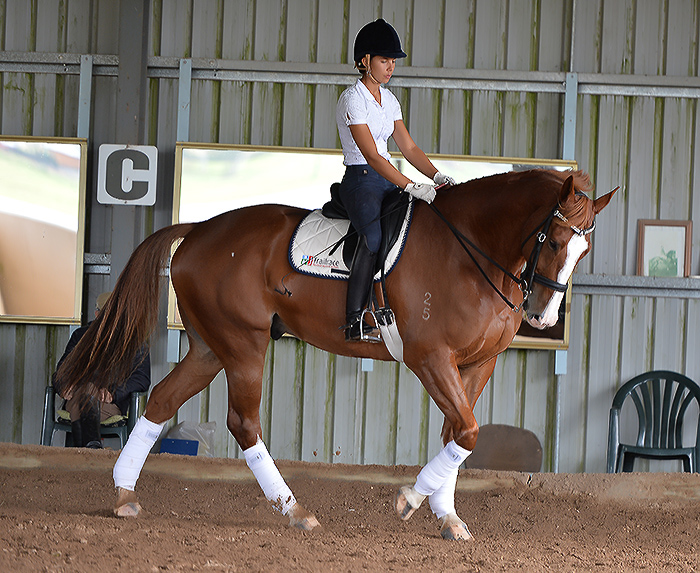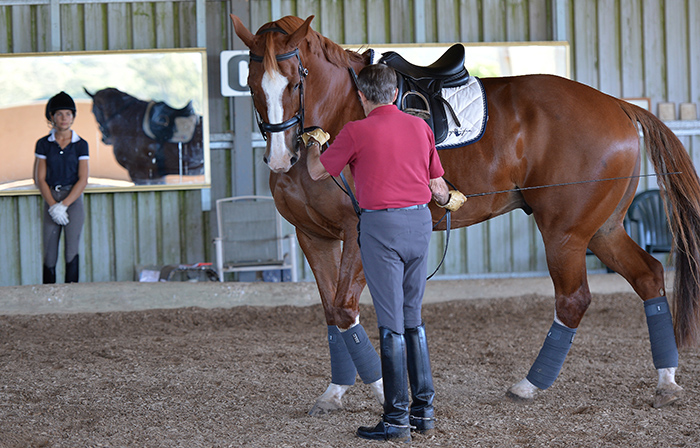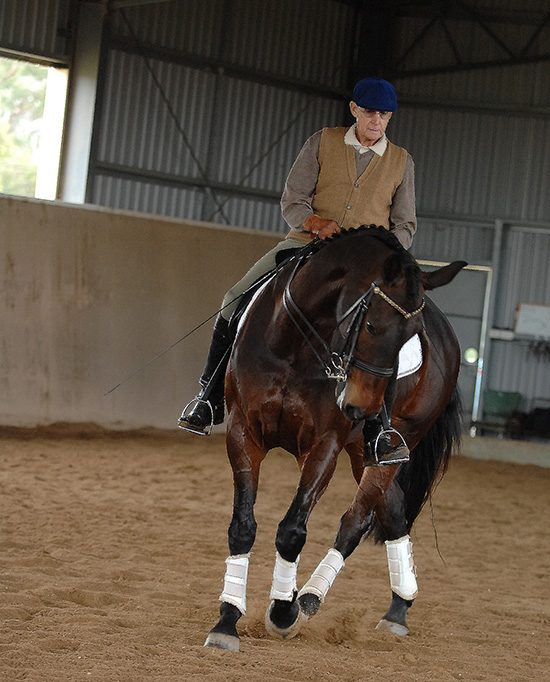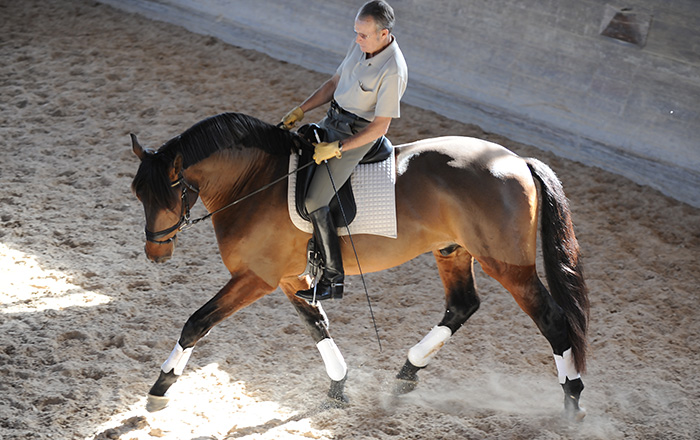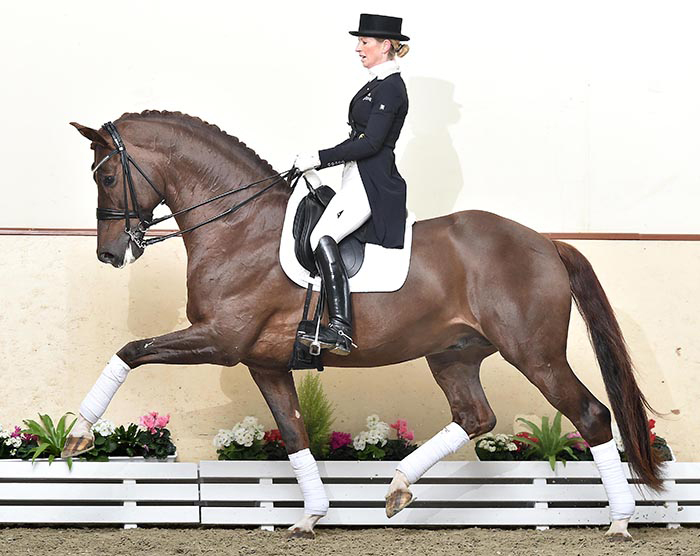Story by Christopher Hector Photos Roslyn Neave
Part 1 here
When he arrived in Australia, some of the ‘too sensitive to compete’ camp tried to claim Miguel as one of their own, but he was having nothing to do with it:
“I have produced competition horses – not so many lately because I have to pay the bills and buy this new home, and the American dollar is very good, and I have spent a lot of time in the United States. But even in America I have a big group out competing.”
“I trained the horse that won the first international Grand Prix in Australia – Ballykisteen Sedeeka with Dawn Mitchell. Rob Goldsworthy and Dignity won so much in South Australia at Grand Prix. Manhattan started Grand Prix with me.”
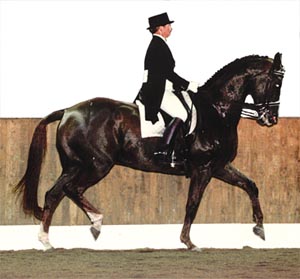
Dawn and Ballykisteen Sedeeka, winners of the first international Grand Prix competition in Australia
“I have trained many successful horses here and I am always oriented to competition because it is only at the competition that I know if my work is really right or not right. If I arrive at E, and I need to do a movement, I have to prepare, and my horse has to accept the preparation, he has to be obedient, he has to be submissive, supple, all those qualities, so that when I arrive at E he has to execute the movement. I can’t say to the judges, sorry I need to make a little circle to prepare.”
“It is in competition that you prove if the horse is trained well or not trained. Of course seeing bad competition disgusts me, and I know it upsets a lot of people. When you see horses competing at Grand Prix level and they don’t have the basics, they are not collected, they are not engaged, they are confused… This is not acceptable.”
story continues below the advertisement
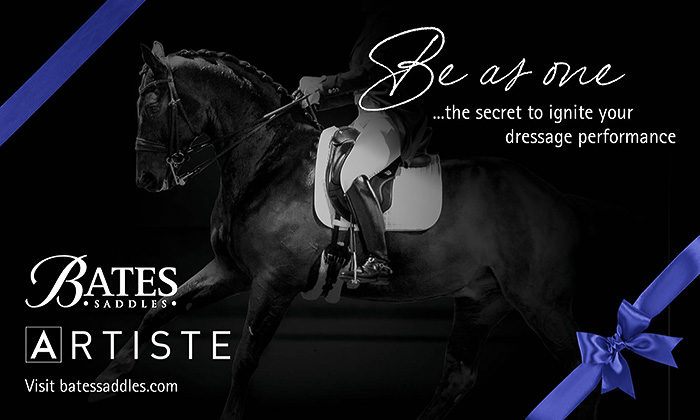
“We should not see so much bad dressage today because the horses are much more suitable for dressage and it is easier to come to a high level in dressage. But I don’t think this will make the riding worse. Once it was like in racing, if you drove the Ferrari and all the others had Porsches, then you would win – but the way the breeding is going now, in a few years, all the horses will be Ferraris. When they are all Ferraris, then the best rider, the best trainer, will be the one who wins. That means riding correctly, training correctly will always be necessary if you want to win. In the past we had one or two horses at the top, now we have three or four, very soon, the fifteen in the class will all the same quality, then only the good rider and the rider who trains the horse well will be the Michael Schumaker of riding and win.”
The best horses for competition will be the German horses?
“For sure – they have had their breeding program for a long time now. They have a sense of discipline, of methodology – I know very well because in one stage of my life I learnt riding with very little discipline, and my life was very disorganized. In the Army I was forced to have discipline and everything went much better. When you are disciplined, you stick with one thing, and if something doesn’t work, you try to find the cause. If this stallion doesn’t breed well, they geld the horse, if the mare is not good, they don’t keep breeding. And the selection is so good, very soon we can go to the computer, press the button, say the breeding we want, and find exactly the horse that we want… they are reaching a level of perfection, mentally and physically. The way they are going now, in a few years we will see such fantastic horses. What we saw last year at the Bundeschampionate, there was such quality of horses coming up, when they go to the top, then the winners will be the ones with correct training.”
story continues below the advertisement
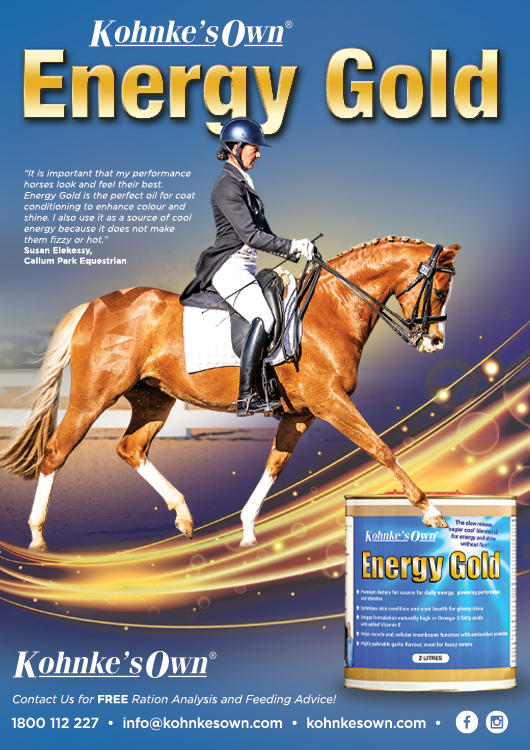
In the Riding Hall: Di and Uluti
In the indoor, Miguel’s wife, Di, is working with the champagne-coloured Isabella Lusitano stallion from Brazil, the five-year-old Uluti:
“This horse is Vega bred, the only ones that they kept pure… This one is a little tricky. He is so nice some days, so embarrassing some days!”
Is there still a place in the world for the Iberian horses – the Lusitanos and Andalusians?
“Of course, this is a horse that has a different way of collection, a different way of moving… I have one Lusitano colt myself, he is my joy, he is only two years old. You can work on passage and piaffe with them because their capacity for collection is fantastic. It would be very good for all Grand Prix dressage riders to have a little ride on one of these horses.”
“Anky van Grunsven’s husband, Sjef, he started out in dressage riding Iberian horses. He knows exactly what collection is, and collection is the object of equitation. Not collection to stay collected, but the ability to go in and out of collection. Sjef knows very well what he is looking for, now he might be training a different type of horse with very different movement from the horses he learnt on, but in his sub-conscious he knows exactly he is looking for.”
“This is what the Iberian horse gives, and he gives a lot of pleasure. You have a lot of good riders who enjoy a very nice life with their horses, but they are not necessarily competitive riders. But they still enjoy riding…”
An Iberian horse who has made it in the competition arena recently, Coroado with Maria Caetano
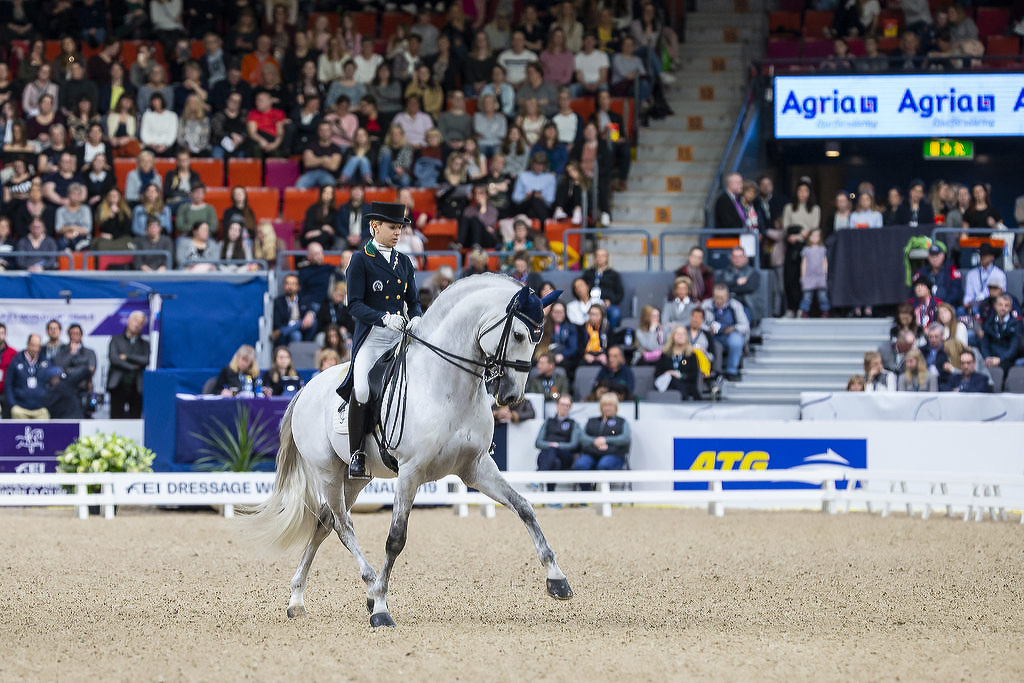 And starring at the World Cup final – Maria Caetano and Coroado
And starring at the World Cup final – Maria Caetano and Coroado
at the World Cup Final 2019
“The way they are breeding the Iberian horses now, they will go quite well in competition, because now they are thinking about the breeding in a way they never did before. They can reach quite a good level but they will never have the expansion of stride of the Warmblood because the Warmblood was bred to have the ability of the Iberian horse to collect PLUS the ability to expand.”
story continues below the advertisement
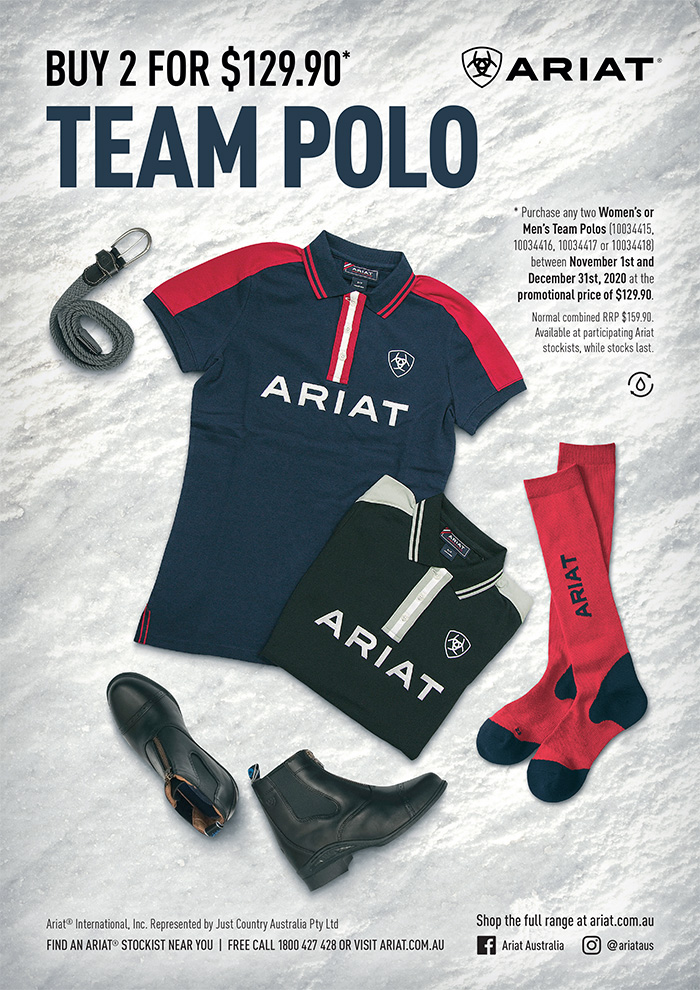
“When you look at the first dressage tests they were designed with Thoroughbreds in mind, very long, very simple. Then when the tests asked for much more passage and piaffe – oh!, I need to have a horse that has much more ability to collect like the Iberian horse, and at the same time expand from that collection – and that is the modern Warmblood. The Iberian horse will never have that ability – they are not genetically made for that tempo of the extension of the trot. You can find one or two exceptions, but if you want to find a competition horse, then you had better go to Germany.”
Still you can see what Miguel means about the Lusitano horses being fun to ride, and Di looks as if she is enjoying herself. Like most of Miguel’s lessons, the work starts with a walk around the forehand – I make the mistake of suggesting that this movement is the one promoted by the French master, Baucher…
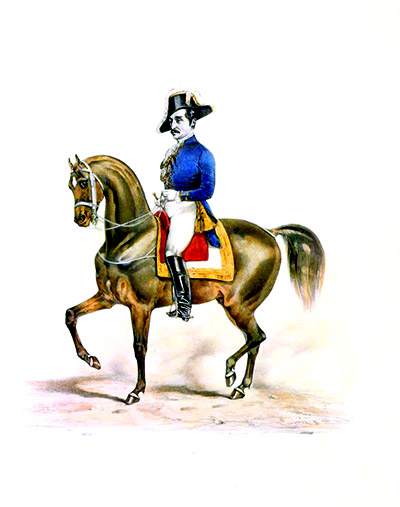
Baucher – madman and genius
“First of all, this exercise is not of Baucher. Baucher was a madman, a genius but a madman, and he decided that he would re-invent equitation. The best thing that ever happened in equitation, was de la Guérinière, and inventing the shoulder-in. The shoulder-in, solves everything. Nuno Oliveira used to say, ‘the shoulder-in is the discipline of equitation’.”
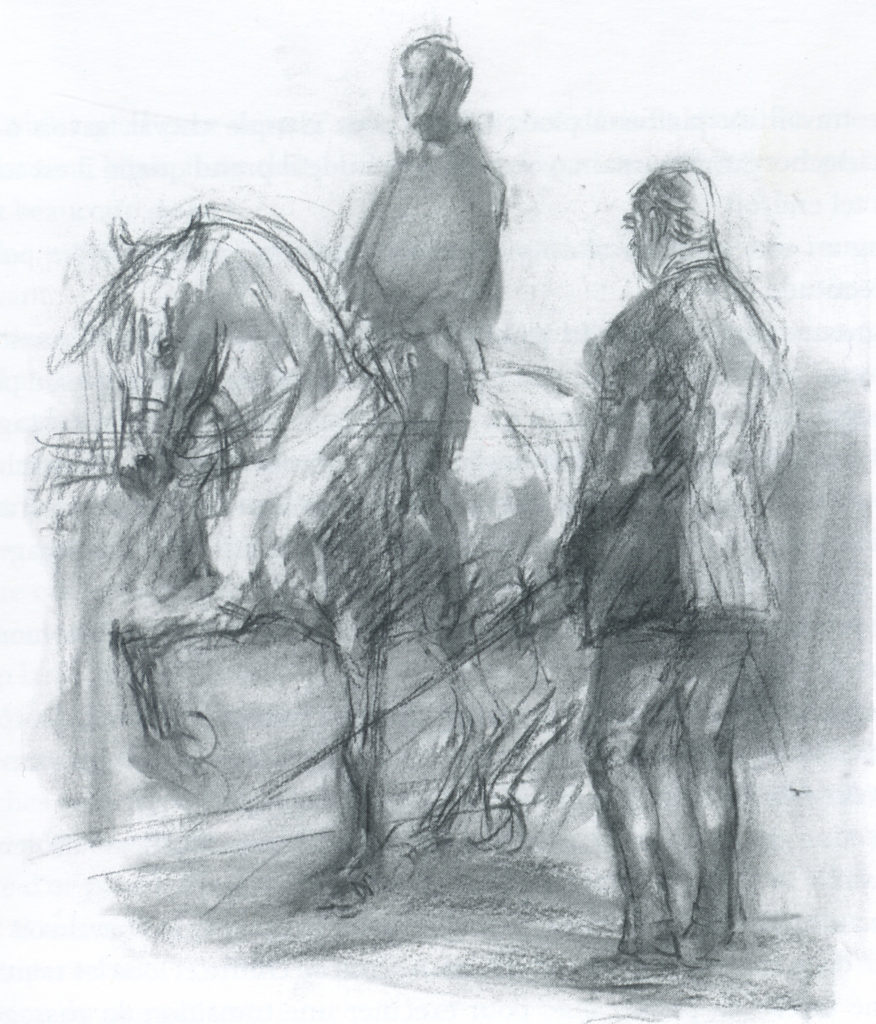
“You have many kinds of shoulder-in – counter shoulder-in, more angle, less angle, many different kinds, but the shoulder-in is the basis of equitation. You prepare a pirouette by the shoulder-in, you might solve a crooked passage by the shoulder-in. You might solve a flying change problem with the shoulder-in. The shoulder-in is the basic exercise of it all. But Baucher said, ‘no’ – never ever in a book of Baucher, or his followers, do you see the term ‘shoulder-in’ because he had to re-invent equitation. And that is what killed him – because if he had kept using the shoulder-in, plus the technique that he invented, then he would have been a genius – and that is what Nuno did… the fusion between de la Guérinière and Baucher. When some French came to see Nuno Oliveira riding, they asked what is this equitation? These were the top showjumping riders from France – and Nuno said, that equitation is yours…”
So how do you describe your exercise?
“It is a small turn around the inside leg. I bend the horse about the inside leg and my aim is for the horse to step towards the outside front leg, the horse bends around the inside leg, making a kind of shoulder fore position around the inside leg, stretch the outside, relax and bend at the poll. It is an easy exercise, and because the horse finds it quite easy, then it calms down, becomes relaxed, and comes into position.”
story continues below the advertisement
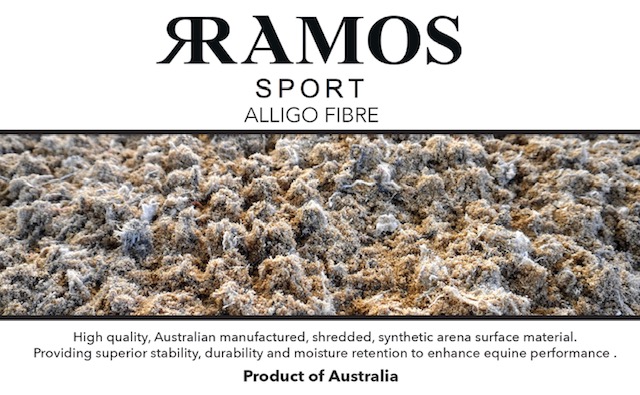
“I start all my horses like this – and that comes from Nuno Oliveira. He did this and taught me to do the same, every time I pick up the reins, I put the horse on the bit by this exercise – instead of push and pull and half halt – I just bend him around the inside leg, and we do quite a small circle around the inside leg. In the past, they used to do this exercise around the pillar.
It is like a shoulder-in on a very small circle, at the walk, it cannot be made at the trot. It is not to collect, but it makes it easier to collect later on because it makes the horse supple, engaged a bit on the inside leg but not too much engaged – it is more to supple up and to stretch out.”
“On that exercise we have to pay attention to only one important thing – always the outside shoulder must be keep moving forward, then you are sure that behind he is also stepping forward, and the horse is not dis-engaging. If you make the turn around the forehand, that is very dangerous because the turn around the forehand that Baucher used to make the horse obedient to the leg, that is difficult, because the horse can step back with the outside leg.”
“What is important in my exercise, is movement forward on the small circle, and after we have movement forward on the small circle, with my inside leg I increase the bend, and increase the activity of the hind leg, to step to the outside shoulder. It is a very easy exercise to use to put the horse on the bit. If a horse is very hot, very excited, he begins to learn, ah, this is what I do every day, so he learns to come into contact and be correct.”
“I have horses starting piaffe and passage, becoming hot, then stop, walk around the inside leg, relax, start again. If I have a horse that is making a flying change every stride, and he starts to get hot, stop, walk around the inside leg, relax, regain the confidence, calm, start again.”
You also use the twenty metre trot circle in the same manner?
“I use that a lot, the shoulder in on the 20 metre circle, with transitions to the medium trot, rising. It’s a shoulder-in at a very small angle, more shoulder-fore than shoulder-in, with the horse really going forward – I use that in two ways: to make a transition to medium trot, and to make a transition to the walk, because the horse can already bend, he is already more engaged, he is more prepared to accept the half halt.”
“I always say, put your horse on the half halt by making the transitions to walk on a twenty metre circle. Trot, walk, one step, trot again – medium trot. Walk, medium trot, change from one rein to the other, keep the horse busy, don’t let him start to anticipate or know what is about to happen. The horse will relax – in some ways it is similar to the walk around the small circle, it is a suppling exercise.”
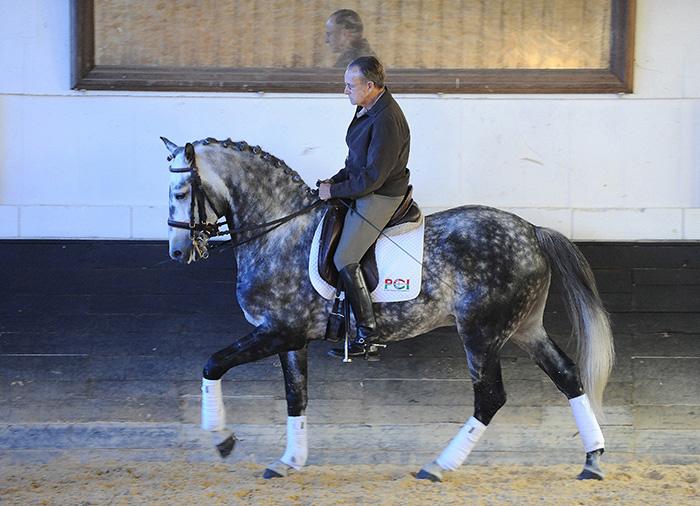
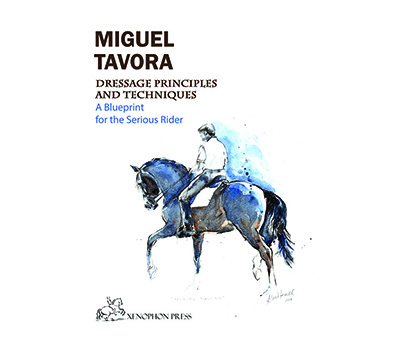
The book is available from the publisher, Xenophon Press
Want to breed to the best German bloodlines? Contact International Horse Breeders now and don’t miss out on this breeding season: www.ihb.com.au
Vitalis



